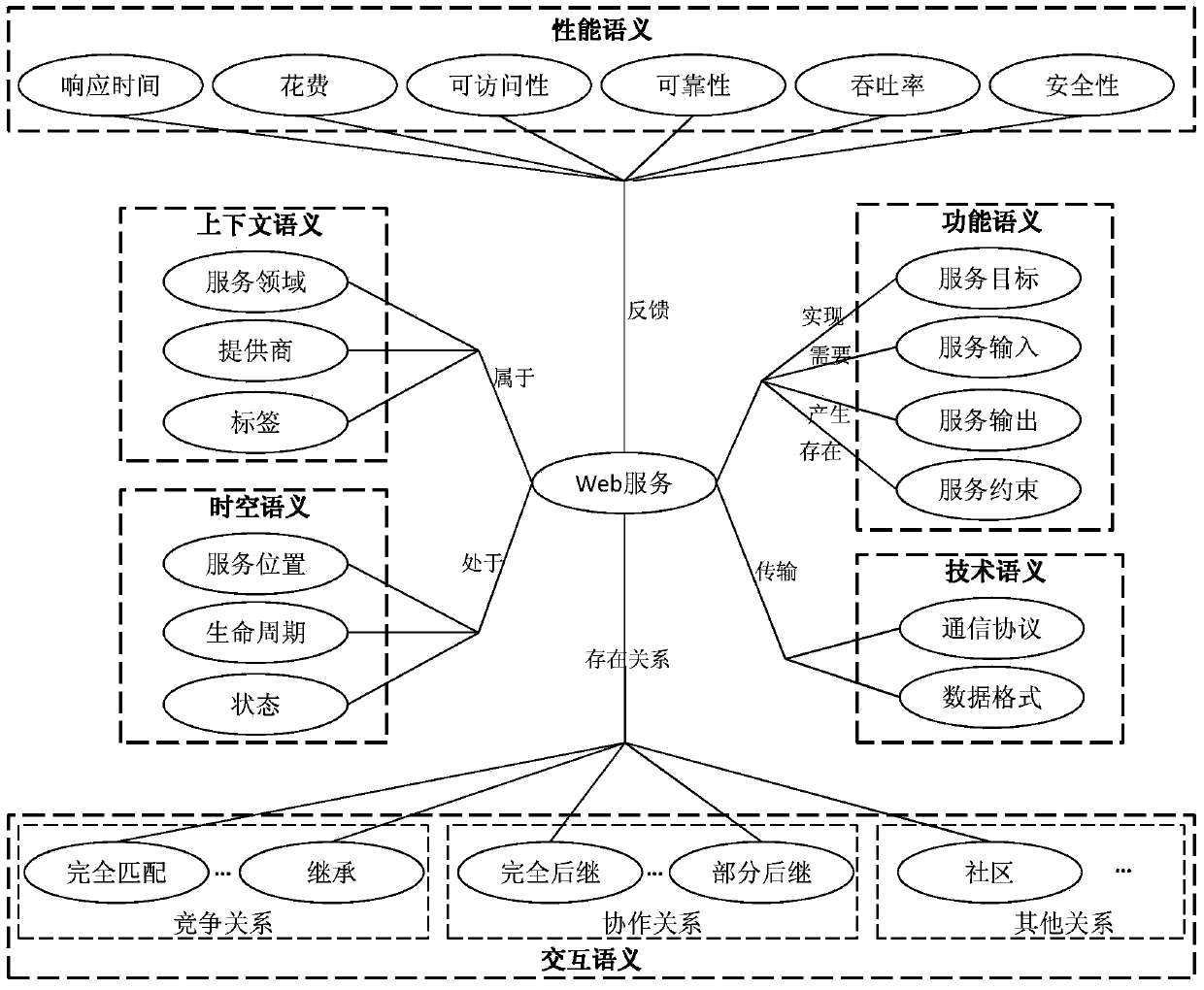Web service transformation method from traditional web services to multi-dimensional semantic models
A technology of semantic model and transformation method, applied in the field of Web service transformation, can solve the problems of lack of semantics, lack of semantic constraints of Web services, and no proposal.
- Summary
- Abstract
- Description
- Claims
- Application Information
AI Technical Summary
Problems solved by technology
Method used
Image
Examples
Embodiment Construction
[0075] The present invention proposes a conversion method from traditional Web services to Web services of multi-dimensional semantic models. For the conceptual diagram of multi-dimensional semantic models, see figure 1 , the service description language of this model is MSDL, which is an XML-based description language. In order to be compatible with the current mainstream Web service description language, the syntax description of MSDL is compatible with the traditional WSDL for Web interface, parameter and communication information, semantics The description part uses OWL (Web Ontology Language) to standardize the semantics of the service. Therefore, the conversion from traditional Web services to multi-dimensional semantic model Web services needs to follow the MSDL specification.
[0076] The technical scheme adopted in the present invention is:
[0077] 1) Define the functional semantics of the multi-dimensional semantic model from the service document described b...
PUM
 Login to View More
Login to View More Abstract
Description
Claims
Application Information
 Login to View More
Login to View More - R&D
- Intellectual Property
- Life Sciences
- Materials
- Tech Scout
- Unparalleled Data Quality
- Higher Quality Content
- 60% Fewer Hallucinations
Browse by: Latest US Patents, China's latest patents, Technical Efficacy Thesaurus, Application Domain, Technology Topic, Popular Technical Reports.
© 2025 PatSnap. All rights reserved.Legal|Privacy policy|Modern Slavery Act Transparency Statement|Sitemap|About US| Contact US: help@patsnap.com



